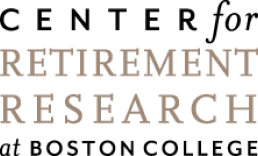Filter


Marching to Retirement Without a Plan
Only about half of all U.S. workers in the private sector participate in retirement savings plans at their current places of employment, according to a new report by the Center for Retirement Research. Pension coverage in this country “remains a serious problem,” concludes the Center, which also sponsors this blog. The goal of the Center’s report is to make sense of the myriad estimates of how many Americans are covered at work. One prominent source of data is the federal government’s survey of employers, the National Compensation Survey. The NCS shows that 78 percent of full-time workers, ages 25 through 64, have some type of defined benefit or defined contribution plan available to them at work. But that’s the rosiest…
April 15, 2014
Half Say Retirement Saving Is Top Goal
Half of all American adults view their top financial goal as making sure they have enough money to retire, finds a survey conducted in early April and released last week by the National Endowment for Financial Education (NEFE). That’s barely changed from 47 percent who said so in NEFE’s 2011 survey. These figures are unimpressive if one considers that most everyone eventually retires. Further, fewer than one in five U.S. workers has the luxury of a traditional defined benefit plan that will send them a pension check every month. Saving for retirement hasn’t gotten any easier either: two of three adults in the NEFE survey identified an inability to save enough as a major financial obstacle. That sentiment may b…
May 6, 2014
401(k)s Stall, Post-Auto Enrollment
Seven years after Congress encouraged employers to automatically enroll their workers in the company 401(k), the retirement fix has run out of steam. Corporate America rushed in to adopt the feature in their 401(k) plans after the Pension Protection Act (PPA) made auto enrollment more attractive by giving employers that used it a safe harbor from non-discrimination rules governing their benefits. Immediately after the PPA provision became effective in December 2007, employee participation in 401(k)s increased. But since that initial bump, it’s been virtually flat for years. In 2008, participation increased to 73 percent of all employees in workplaces that offered 401(k)s, up from 68 percent in 2007, according to Vanguard Group Inc.’s new “America Saves 2013” report, which provides…
June 25, 2013
Latino Labor Force’s Retirement Burden
As the U.S. Department of Labor video above makes clear, the population of Latino workers is exploding. By 2024, nearly 33 million Latinos will be working in this country – they will have doubled their labor force share to 20 percent, from just 10 percent in 1995. Despite their expanding presence in the labor market, Latino-Americans face significant retirement challenges. Chief among them is that they don’t have the same access to traditional pensions and retirement savings plans that white Americans have, primarily because of where Latinos tend to work. Two out of three Latino workers – many people prefer the term Hispanic – lack a 401(k)-style plan in their jobs, the U.S. Social Security Administration and other sources report…
October 25, 2016
Retirement Saving: Excuses and Regrets
U.S. workers have a long list of reasons, many of them legitimate, for why they can’t come up with the money for a retirement savings plan. But here’s the rub: we live in a 401(k) world. Workers who aren’t convinced of the urgency of saving should listen to people who have already retired. Even though many current retirees have defined-benefit pensions, they have become largely unavailable to most people still working today. And these retirees say they’ve learned the hard way that saving is key. Excuses now and regrets later – these two takeaways came out of a nationally representative survey of workers and retirees by HSBC, a global financial institution. Saving for retirement is not a major priority for…
January 29, 2015
U.S. Millionaires: a Racial Breakdown
This video examines wealth through the prism of race. It compares the share of the nation’s African-American, Hispanic, Asian-American and white populations who have net worth exceeding $1 million; net worth equals financial and other assets minus mortgages and other debts. If the fact that there is a racial divide isn’t surprising, the magnitude of it might be. Other factors also have an enormous influence over who gets rich, and understanding this becomes increasingly important amid rising inequality. The biggest determinant of wealth is whether our parents are rich, as recent research has shown. Age and education are also crucial. That’s because older people have more time to save and accumulate wealth, and a college education typically leads to jobs…
February 4, 2016
Changes to Reverse Mortgages Continue
The federal government continues to work out the kinks in its reverse mortgage program. The latest change allows a non-borrower to remain in her home after her spouse, who signed the reverse mortgage, has died. The federal government established its reverse mortgage program in the 1990s to provide an alternative source of income for retirees over age 62. These Home Equity Conversion Mortgages (or HECMs) are secured by the equity in borrowers’ houses, and the loans are repaid only when they move or die. The loans are federally insured to ensure that borrowers get all the funds they’re promised, even if the lender fails, and that lenders are repaid, even if the value of the property securing the loan declines…
September 24, 2015
Medicare Advantage Enrollment Doubles
Enrollment in the Medicare Advantage plans that private insurers offer as an alternative to traditional Medicare coverage has more than doubled over the past decade, the Kaiser Foundation reports. The share of the Medicare population enrolled in these private plans is 30 percent, up from 13 percent in 2005, the non-profit foundation said. The reason for this dramatic growth: Medicare Advantage became a better deal for older Americans in the wake of a 2003 increase in federal subsidies to insurance companies offering the plans. The federal government subsidizes insurers through its reimbursements for the care they cover for older Americans enrolled in Medicare Advantage. Those payments were increased in 2003. Insurers responded by reducing beneficiaries’ copayments and cost-sharing in t…
May 20, 2014
Can You Pass this Retirement Quiz?
Most people in a recent retirement survey fielded by the American College of Financial Services were confident that they had saved enough money to live in comfort in retirement. But how do they know if they’re on-track? Four out of five also flunked the survey’s retirement planning quiz, answering less than 60 percent of its 38 financial questions correctly. What’s striking about the poor results is that the quiz takers were a select and relatively well-off group: 60- to 75-year-olds with at least $100,000 in financial assets, excluding their home equity. A majority of them also have a financial adviser. One would think that people with both investment and retirement experience would do better. This also raises the question of what…
February 16, 2016
Unseen Risks Challenge Consumers
Financial-product complexity isn’t talked about on Capitol Hill, where Congress is arming itself for battle royale over the appointment of Harvard Law School professor Elizabeth Warren to head the new Consumer Financial Protection Bureau. But some economics and business professors are sticking up for the financial consumer, who they say faces an “ever-widening set of financial options” and “dizzying amount of information.” “Households are expected to make decisions about pension plan contributions and payouts, to choose from a wide array of credit instruments to fund everything from home purchase to short-term cash needs, and more generally to assume a greater level of responsibility for their financial well-being,” Harvard economists Brigitte Madrian and John Campbell, Harvard Law professor Howell Jackson, and…
June 21, 2011
Less is More
In this humorous Ted video, Graham Hill advocates minimalism as an alternative to consumerism and showcases his 420-square-foot apartment in Manhattan. His living arrangement may seem extreme but residents of Tokyo have been living small for years, and his main point is well taken: he has reduced both his living expenses and his environmental footprint. Hill is a modern Renaissance man. He studied architecture, founded Treehugger.com to take environmental sustainability mainstream, and dreamed up the idea for those ceramic Greek coffee cups, a replica of the paper cups, found in art museum gift shops. “From his New York home, he schemes daily about how he can help humanity avoid rapid extinction,” according to his bio…
October 11, 2011
The Many Facets of Retirement Inequality
Retirement inequality is a thread running through several articles that have appeared here this year. One blog that was particularly popular with our readers distinguishes retirees who have enough wealth to maintain the same spending levels throughout retirement from those who will, over time, have to cut back and reduce their standard of living. The research behind the article – “Health and Wealth Drive Retirees’ Spending” – makes clear that wealth is just one component of a satisfying lifestyle. Even retirees who can afford to maintain their living standard may not be healthy enough to enjoy their money to the fullest. The retirees who have both – health and wealth – are best equipped to maintain their pre-retirement lifestyle. Homeowners…















